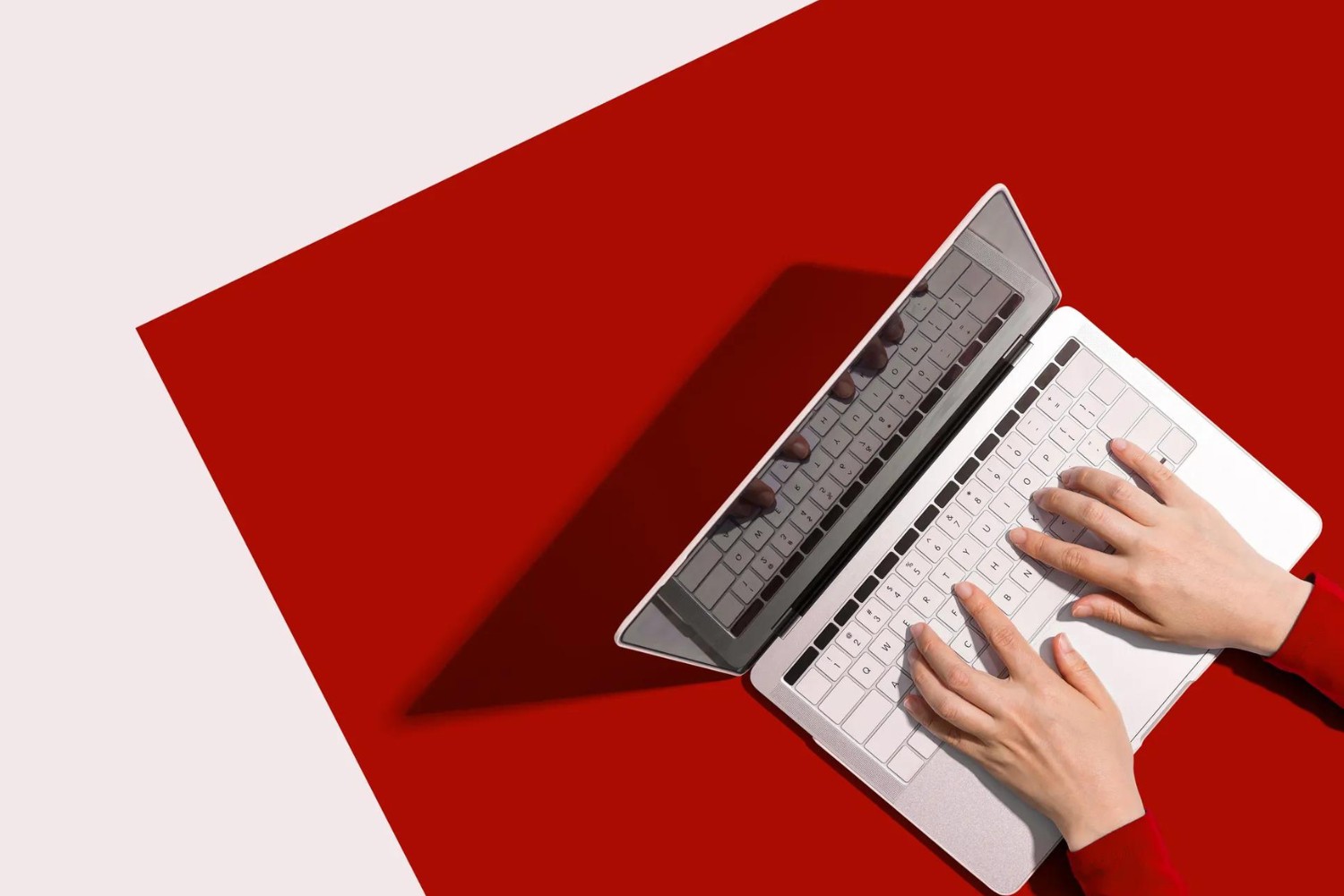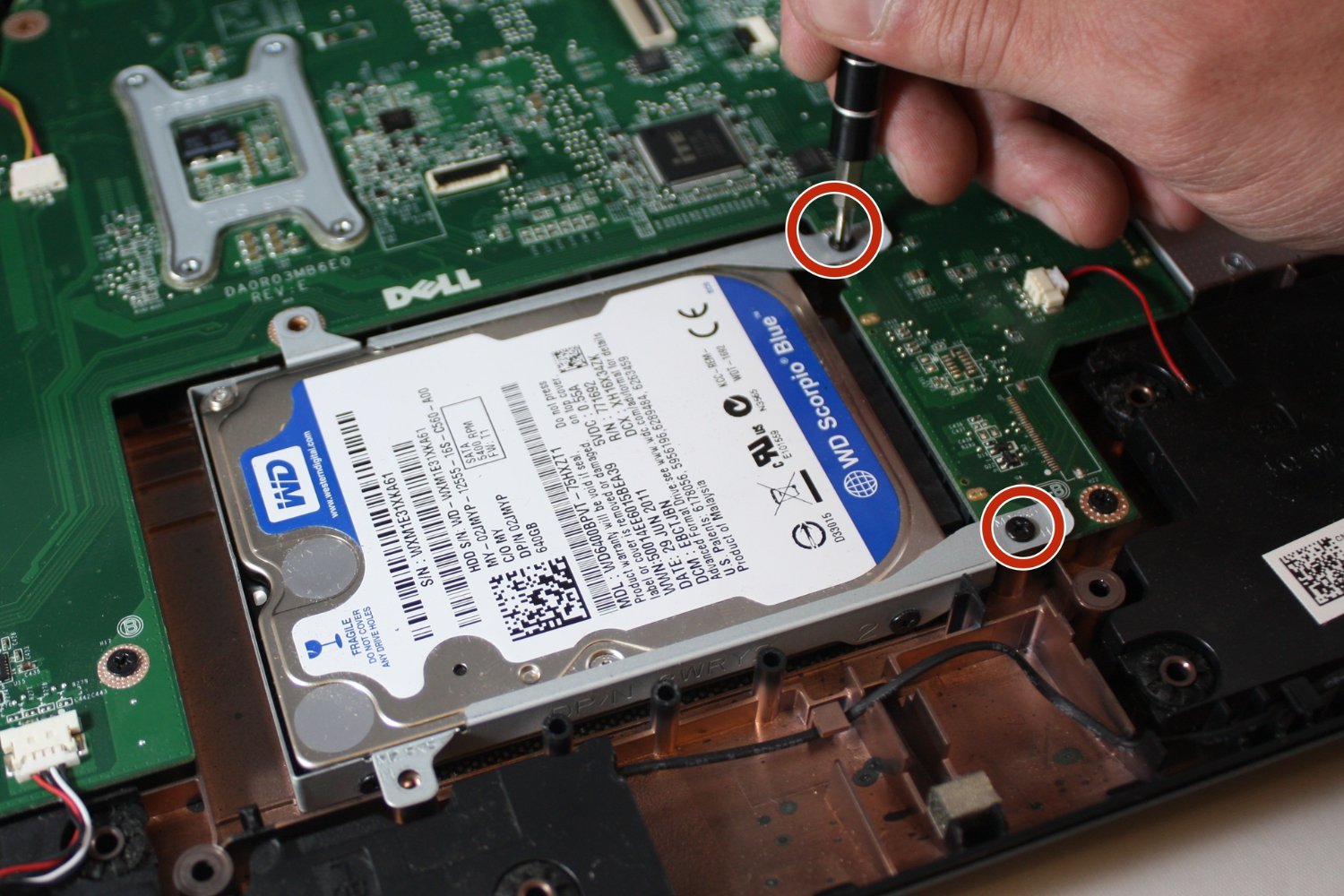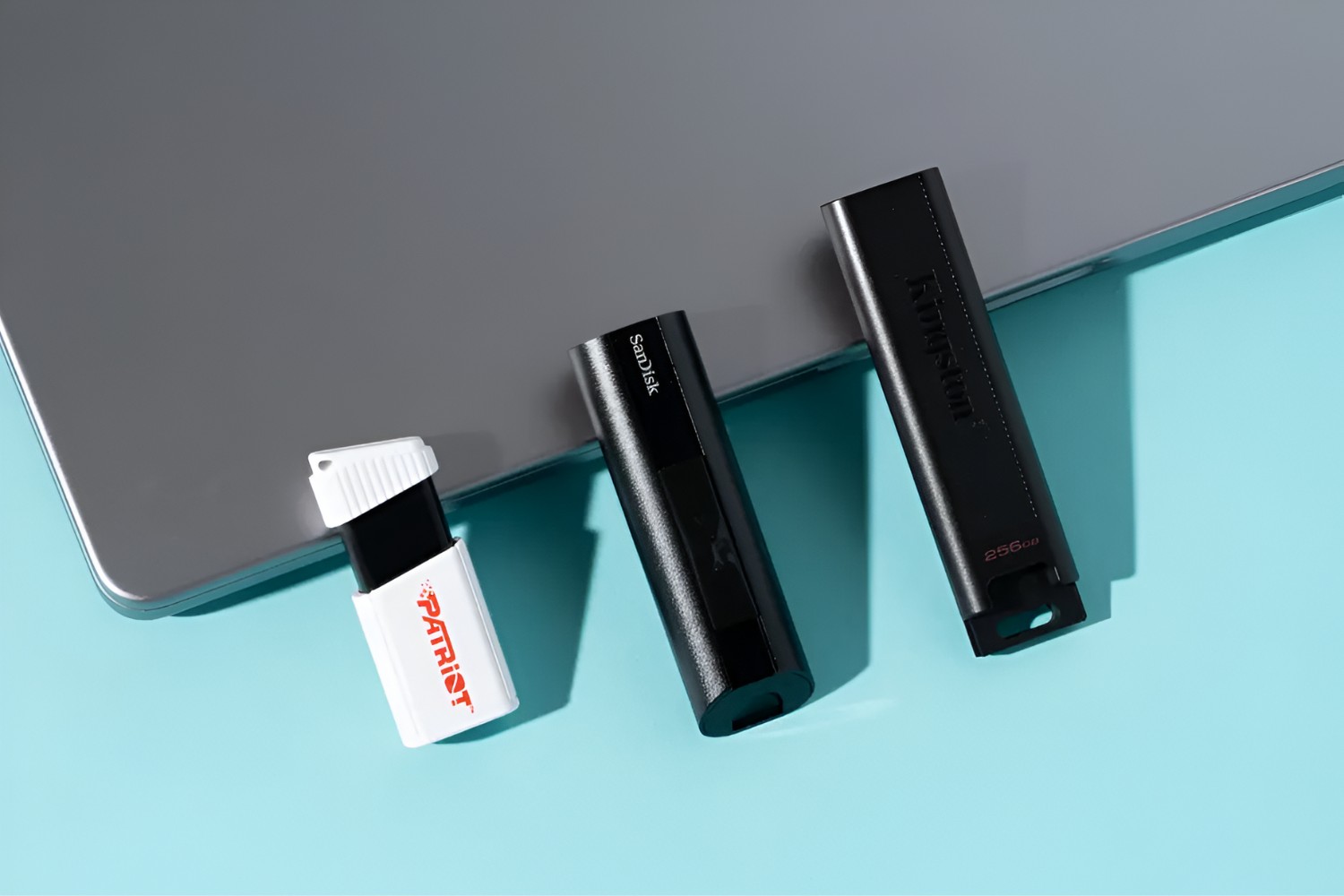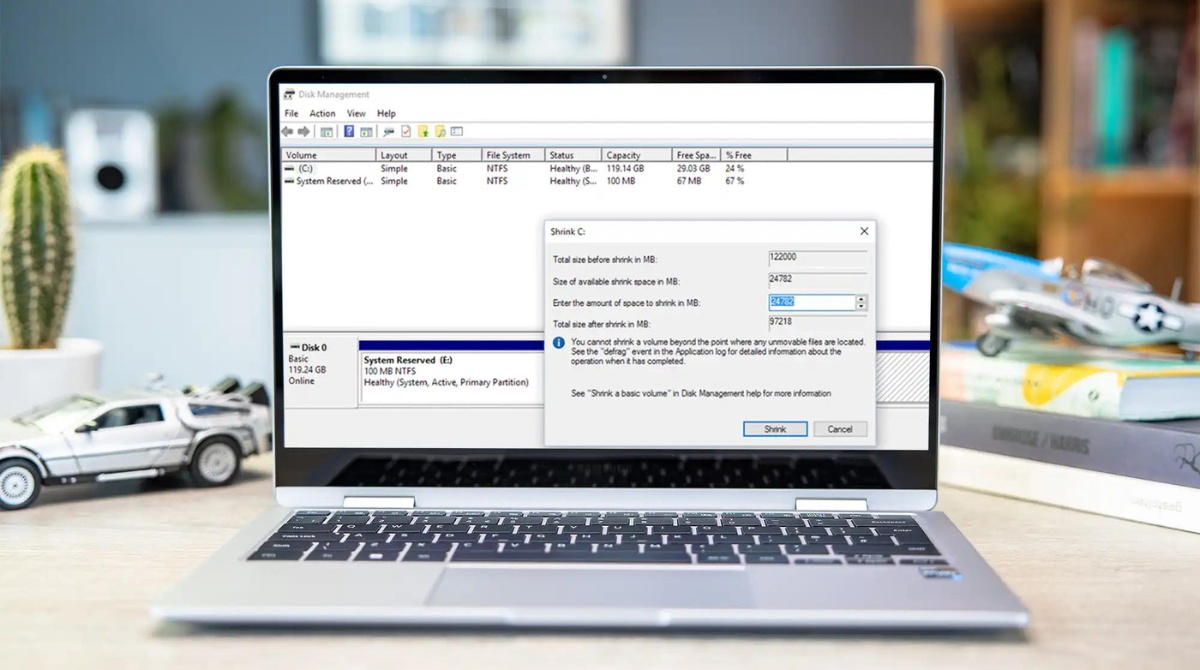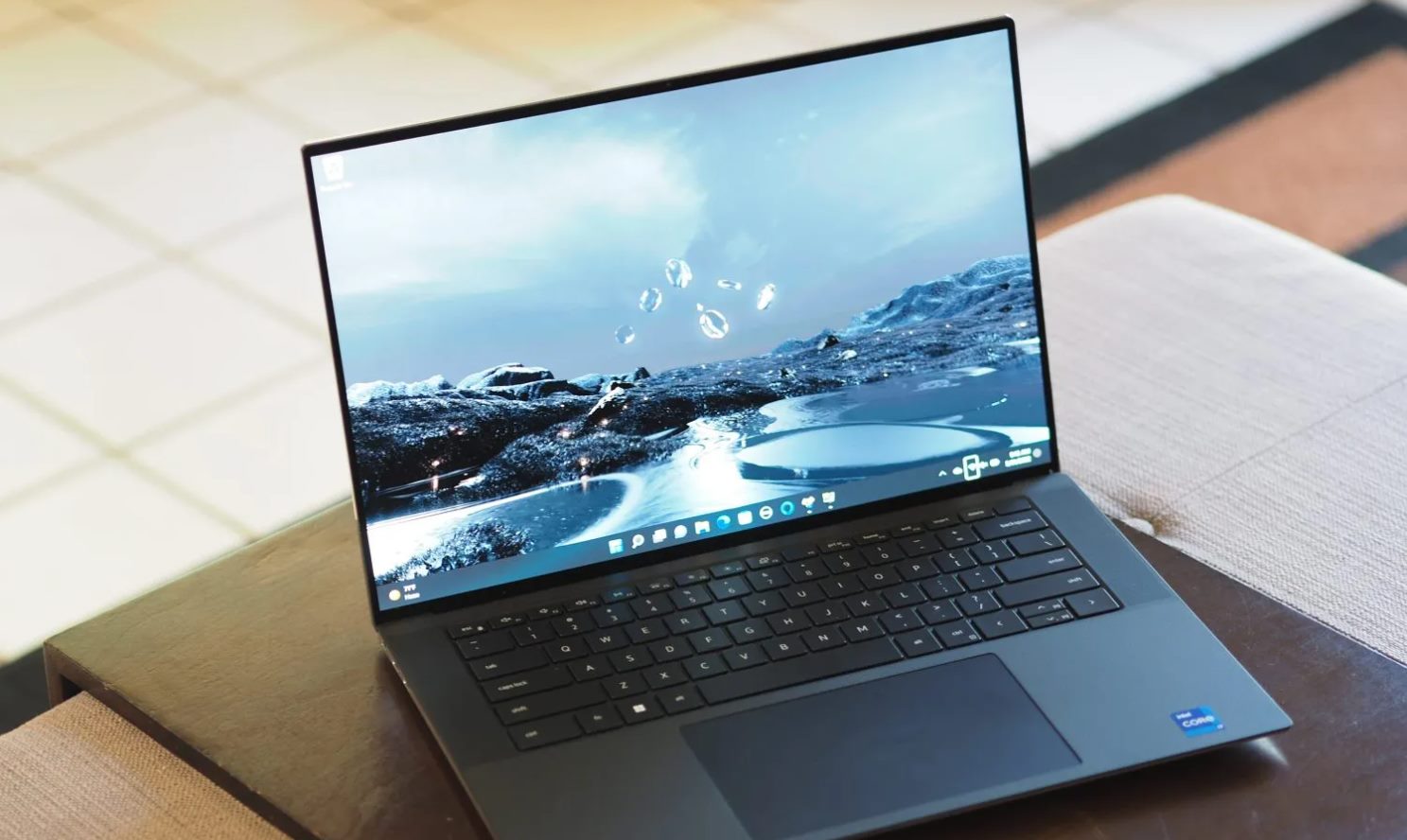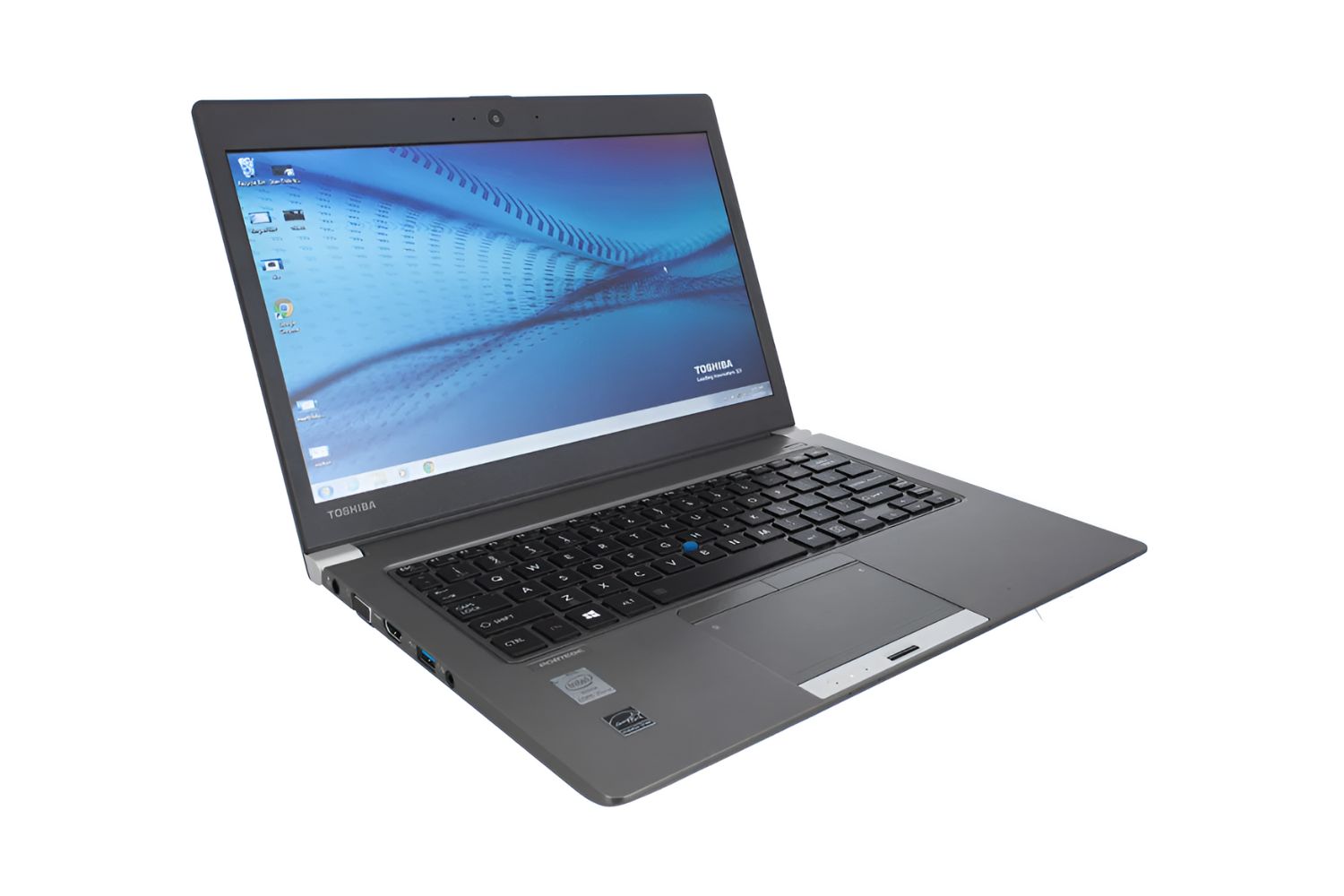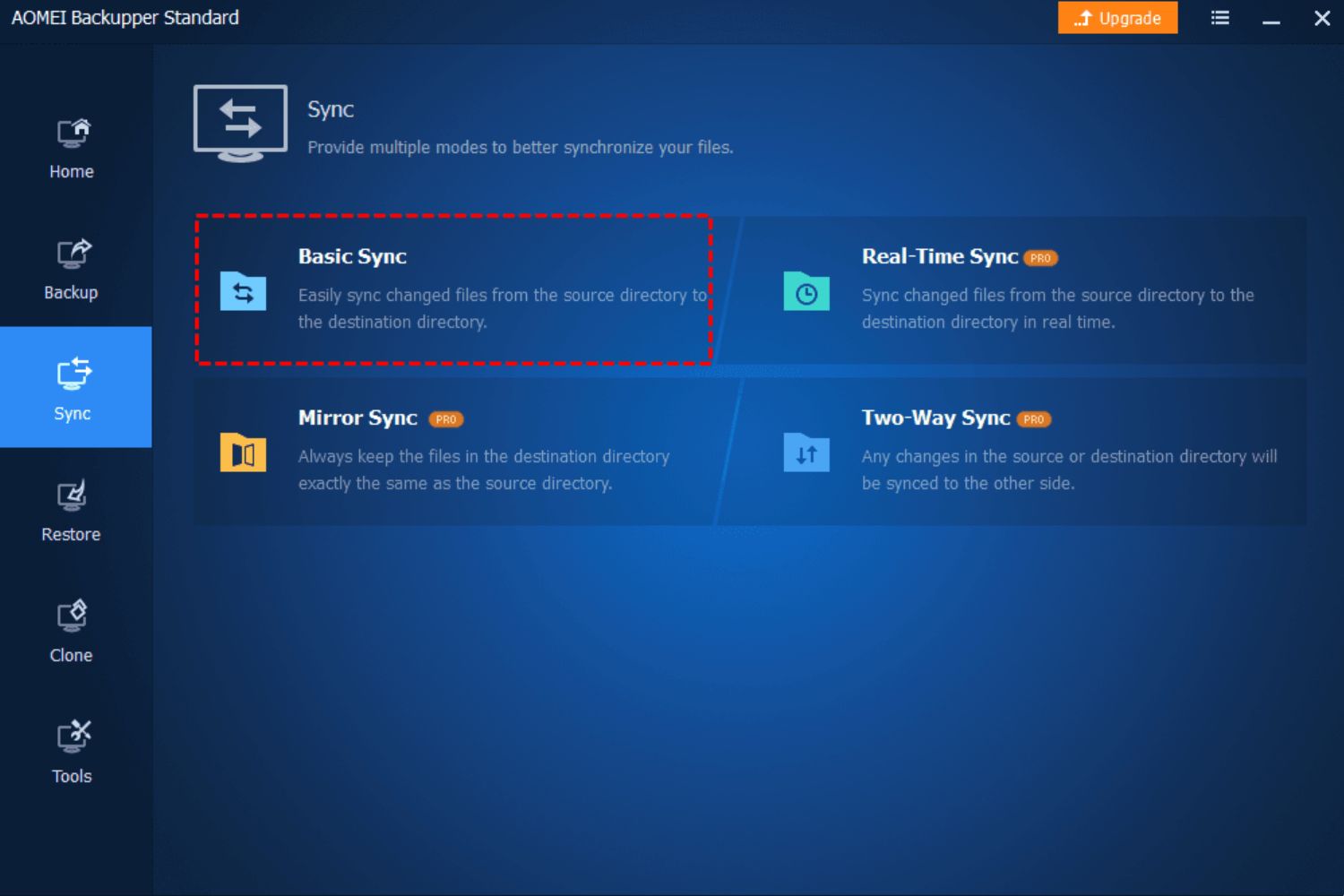Introduction
Welcome to the world of ultrabooks, where sleek design meets impressive performance. These ultra-thin and lightweight laptops have become increasingly popular due to their portability and power. However, one common challenge faced by ultrabook users is the limited storage capacity.
When you have a limited amount of storage space, it becomes essential to optimize every inch of it to make the most out of your ultrabook. In this article, we will explore various ways to save space on your ultrabook, allowing you to store more files, install additional programs, and improve overall performance.
By implementing these space-saving techniques, you can ensure that your ultrabook remains fast, efficient, and clutter-free. Whether you are a student, a professional, or a casual user, these tips will help you maximize your ultrabook’s storage capacity and enhance your productivity.
From removing unnecessary files and programs to utilizing cloud storage and external devices, we will cover a wide range of methods to help you save space. Additionally, we will discuss how to compress files and folders, clean up temporary files and caches, and manage virtual memory settings to optimize storage usage.
We will also provide expert recommendations on lightweight apps and programs that consume fewer system resources and take up less space. Furthermore, we will explore techniques to organize your desktop and files effectively, customize start-up programs, and limit caching and offline access.
Whether you are a seasoned ultrabook user or new to this technology, this comprehensive guide will equip you with the knowledge and tools necessary to save space and make the most out of your ultrabook. So, let’s dive in and explore the world of space-saving techniques for ultrabooks.
Remove Unnecessary Files and Programs
The first step in saving space on your ultrabook is to identify and eliminate unnecessary files and programs. Over time, your ultrabook can accumulate a significant amount of data that you no longer need. By removing these files, you can free up valuable storage space and improve the overall performance of your device.
Start by running a disk cleanup utility to identify and delete temporary files, system logs, and other unnecessary data. Most operating systems have a built-in disk cleanup tool that can be accessed through your system settings or control panel. This tool will scan your ultrabook for files that can be safely removed without causing any harm to your system.
In addition to the disk cleanup utility, it’s important to manually review your files and folders to identify any duplicates, outdated documents, or large media files that you no longer need. Remove these files and empty the recycle bin to free up additional storage space.
Next, take a look at the programs installed on your ultrabook. Consider uninstalling any software that you no longer use or need. Many programs come with built-in uninstallers, or you can use the “Programs and Features” section in your system settings to remove them. Be mindful of any software that might be bundled with other programs, as you should only remove those that you are sure are unnecessary.
It’s also a good idea to review and remove browser extensions and plugins that you no longer use. These extensions can often take up valuable system resources and contribute to slower performance. Most browsers have a dedicated settings menu where you can manage your installed extensions and remove the ones you don’t need.
By regularly reviewing and removing unnecessary files, programs, and browser extensions, you can free up a significant amount of storage space on your ultrabook. This will not only improve the performance of your device but also allow you to utilize the available storage for more important files and applications.
Utilize Cloud Storage
When space is limited on your ultrabook, one effective solution is to utilize cloud storage services. Cloud storage allows you to store your files, documents, and media on remote servers accessed through the internet. By doing so, you can free up local storage on your ultrabook while still having convenient access to your files from anywhere and any device with an internet connection.
Several cloud storage providers offer free plans with a limited amount of storage space, while others provide paid options with larger storage capacities. Google Drive, Dropbox, and Microsoft OneDrive are popular cloud storage services that offer both free and paid plans. Consider your storage needs and select a service that suits your requirements.
Once you have chosen a cloud storage provider, install the corresponding application or software on your ultrabook. These applications create a folder on your device that syncs with the cloud storage account. You can easily drag and drop files into this folder, and they will be automatically uploaded and synced with your cloud storage.
To save even more space on your ultrabook, you can choose to selectively sync certain folders or files from your cloud storage. This allows you to access all your files through the cloud storage application, but not all of them are stored locally on your ultrabook. By only syncing the files you need on a regular basis, you can save valuable storage space without sacrificing accessibility to your other files.
Cloud storage also offers additional features like file sharing, collaboration, and version control. You can easily share files with others, collaborate on documents in real-time, and have access to previous versions of your files. These features enhance productivity and make cloud storage a versatile solution for managing and organizing your digital assets.
However, it’s crucial to remember that cloud storage relies on an internet connection. So, if you are in a location with limited or no access to the internet, you may not be able to access your files stored in the cloud. It’s always recommended to have a backup of your most important files locally on your ultrabook or an external storage device in case of any connectivity issues.
Utilizing cloud storage not only saves space on your ultrabook but also provides flexibility, accessibility, and convenience for your files. Whether you need to access files on multiple devices or collaborate with others, cloud storage is a reliable and efficient solution to maximize your ultrabook’s storage capabilities.
Optimize Storage Settings
Another effective way to save space on your ultrabook is to optimize the storage settings of your operating system. By making a few adjustments, you can ensure that your storage is used efficiently and unnecessary files are kept to a minimum.
Start by enabling storage optimization features provided by your operating system. For example, Windows 10 has a feature called Storage Sense that automatically removes unused files and manages storage on your behalf. This feature can be enabled through the settings menu and helps to free up space by deleting temporary files, clearing the recycle bin, and removing unnecessary system files.
MacOS users can utilize the built-in optimization tool called “Optimize Storage.” This feature automatically removes downloaded files, clears caches, and empties the trash. You can access this setting through the system preferences and customize it to your specific needs.
In addition to the built-in storage optimization features, you can also manually control where files are saved on your ultrabook. For example, you can change the default location for downloads, documents, and media files to an external storage device or a designated folder on your ultrabook that has more available space. This way, you can keep your main storage drive free from unnecessary files, while ensuring easy access to your important files.
Another useful technique is to enable the “OneDrive Files On-Demand” feature for Windows users or the “Optimize Mac Storage” feature for MacOS users. These features allow you to access your files stored in the cloud storage without having to download them to your local storage. This saves space on your ultrabook by only keeping placeholders for your files and downloading them on-demand when you need to access them.
Additionally, you can utilize file compression techniques to save space on your ultrabook. Several file formats, such as images and documents, can be compressed without losing noticeable quality. This reduces the file size and saves storage space. There are numerous software tools available that can help you compress files effectively while maintaining satisfactory file quality.
By optimizing the storage settings on your ultrabook, you can ensure that your storage space is used efficiently and unnecessary files are removed or stored in more accessible locations. These adjustments not only help save space but also contribute to improved performance and organization on your ultrabook.
Use External Storage Devices
When you find yourself running out of storage space on your ultrabook, one of the most straightforward solutions is to utilize external storage devices. These devices provide an additional storage capacity that you can easily connect to your ultrabook when needed, allowing you to store files, documents, and media without overloading your internal storage.
One popular option for external storage is a USB flash drive. These small and portable devices offer varying storage capacities, from a few gigabytes to several terabytes. They are easy to use and can be plugged into any available USB port on your ultrabook. Simply transfer your files to the flash drive, and you can access them whenever you need them.
Another option is an external hard drive. These devices have larger storage capacities and are suitable for storing large files, such as HD videos, high-resolution images, and extensive software libraries. External hard drives are available in both traditional HDD (hard disk drive) and SSD (solid-state drive) formats, offering different levels of performance and durability.
For users who need to access their files on the go, portable SSDs (solid-state drives) are an excellent choice. These compact and lightweight devices offer fast data transfer speeds and are more resistant to physical shocks compared to traditional hard drives. They are ideal for professionals and travelers who require quick and reliable access to their files.
In addition to USB flash drives and external hard drives, cloud storage devices can also be a viable option. These devices connect to your home or office network and provide centralized storage accessible by multiple devices. They allow you to access your files from any device within your network while keeping your ultrabook’s storage free from bulky files.
When using external storage devices, it’s essential to organize and manage your files effectively. Create separate folders and categorize your files based on their type or purpose. This way, you can easily locate specific files when needed and avoid cluttering your external storage.
Furthermore, it’s crucial to regularly back up your files from your ultrabook to external storage devices. This ensures that your important data is protected in case of any unforeseen events, such as hardware failure or accidental deletion.
By utilizing external storage devices, you can expand your ultrabook’s storage capacity and alleviate the strain on your internal storage. Whether you opt for a USB flash drive, an external hard drive, or a cloud storage device, these external storage solutions offer flexibility, convenience, and peace of mind when it comes to managing and securing your files.
Stream Media Instead of Downloading
Media files, such as movies, TV shows, and music, can occupy a significant amount of storage space on your ultrabook. Instead of downloading these files and storing them locally, consider streaming them online. Streaming media has become increasingly popular, offering a convenient and space-saving way to enjoy your favorite content without taking up valuable storage on your ultrabook.
Streaming services like Netflix, Hulu, Spotify, and YouTube provide a vast library of movies, TV shows, music, and videos that can be accessed through an internet connection. Instead of downloading files and saving them on your ultrabook, you can simply stream the content you want to watch or listen to directly from these platforms.
By streaming media, you can enjoy a wide range of content without worrying about storage limitations. You can access your favorite TV shows, movies, and music albums anytime, anywhere, as long as you have an internet connection.
Additionally, streaming media eliminates the need for storing large media files on your ultrabook, freeing up valuable storage space for other files and applications. This can significantly extend the available storage capacity of your device and improve overall performance.
Streaming media also offers the advantage of instant access to the latest content. Instead of waiting for downloads to complete, you can start watching or listening to your favorite shows or songs instantly. This is particularly useful when you are on the go and want to quickly access entertainment or information without the need for large storage capacities.
However, it’s important to take note of your internet connection’s speed and data limit. Streaming media requires a stable and reasonably fast internet connection to ensure a smooth playback experience. If you have a limited data plan or a slow internet connection, you may need to adjust your streaming quality settings to avoid excessive data usage or buffering issues.
Furthermore, some streaming services offer the option to download content for offline viewing. This allows you to download movies, TV episodes, or music albums to your ultrabook when you have access to a stable internet connection. You can then watch or listen to these files without an internet connection, providing flexibility for times when an internet connection may not be available.
By leveraging streaming services, you can enjoy a wide variety of media content without sacrificing valuable storage space on your ultrabook. Whether you prefer movies, TV shows, music, or videos, streaming offers a convenient and space-saving solution for accessing and enjoying digital entertainment on your ultrabook.
Compress Files and Folders
One effective way to save space on your ultrabook is to compress files and folders. File compression reduces the size of files and folders by utilizing compression algorithms, allowing you to store more data in less space. This can be particularly useful for large files or folders that are consuming a significant amount of storage on your ultrabook.
Most operating systems have built-in compression tools that you can use to compress files and folders. For example, Windows users can utilize the native ZIP compression format, which is widely supported and compatible with various software applications. Other compression formats, such as RAR and 7z, offer even higher compression ratios but may require third-party software to create or extract compressed files.
To compress a file or folder, simply right-click on the item, select the “Send to” option, and choose “Compressed (zipped) folder” (or the respective compression format). This will create a compressed file that takes up significantly less space than the original file. You can then safely delete the uncompressed version, freeing up valuable storage space on your ultrabook.
However, it’s important to note that not all files are suitable for compression. Some files, such as already compressed media files like MP3s or JPEG images, may not compress much further or may even increase in size after compression. Before compressing a file, consider its format and size to determine if compression will result in significant space savings.
It’s also worth mentioning that compressed files need to be extracted before they can be used. Keep this in mind when compressing files that you frequently access or modify. It may be more efficient to compress files that are not frequently used or files that can be easily replaced if needed.
Additionally, consider organizing your files into separate folders and compressing entire folders instead of individual files. This can help to keep related files together and make it easier to manage and locate specific files when needed.
When using compressed files, it’s important to have appropriate software installed on your ultrabook to extract and open them. Most operating systems provide native support for ZIP files, but additional software may be needed for other compression formats. Ensure that you have the necessary software in place to handle the compressed files you plan to use.
By compressing files and folders, you can significantly reduce their size and free up valuable storage space on your ultrabook. Whether you have large files or folders taking up excessive storage capacity or want to optimize your storage usage, file compression is a practical solution to make the most out of your available space.
Clean up Temporary Files and Caches
Over time, your ultrabook can accumulate temporary files and caches that take up valuable storage space. These files are generated by various applications and processes and are meant to provide temporary data that helps with faster loading and smooth operation. However, they can build up over time and start occupying a significant amount of storage. Cleaning up temporary files and caches regularly is an effective way to free up space on your ultrabook and improve its overall performance.
Most operating systems have built-in tools to help you clean up temporary files and caches. For example, Windows users can utilize the Disk Cleanup utility, which is accessible through the system settings or control panel. This tool scans your ultrabook for unnecessary files, including temporary files, system logs, and cached web pages, and removes them to free up storage space.
In addition to the built-in tools, there are third-party software applications available that specialize in cleaning up temporary files and caches. These applications often provide more advanced features and options for cleaning, allowing you to target specific types of files or applications.
Cleaning up temporary files and caches not only helps to free up storage space on your ultrabook but also improves system performance. By removing these files, you can reduce the amount of data that needs to be processed, leading to faster application startup times and smoother multitasking.
When cleaning up temporary files and caches, it’s important to exercise caution and not delete any files that are necessary for normal operation. While most temporary files and caches are safe to delete, some may be actively used by applications or processes. It’s always a good idea to review the files before deleting them or use a reputable cleaning software that can identify and safely remove unnecessary files.
Additionally, some applications have built-in settings to control the amount of cache they use. For example, web browsers often have options to limit the size of their cache or clear it entirely. By adjusting these settings, you can prevent caches from growing too large and consuming excessive storage space on your ultrabook.
Regularly cleaning up temporary files and caches not only saves storage space on your ultrabook but also helps to maintain its performance and responsiveness. By removing unnecessary files, you can ensure that your ultrabook runs smoothly and efficiently, allowing you to make the most out of your available storage capacity.
Uninstall Unused Apps and Games
One of the easiest and most effective ways to free up space on your ultrabook is to uninstall unused apps and games. Over time, you may accumulate a collection of software that you no longer need or rarely use. These unused applications take up valuable storage space and can contribute to slower performance. By uninstalling them, you can reclaim storage space and improve the overall performance of your ultrabook.
Start by reviewing the list of installed apps and games on your ultrabook. Look for applications that you have not used in a long time or no longer find useful. Often, these apps are remnants of trial software, pre-installed programs, or games that you have finished playing.
Most operating systems provide a straightforward way to uninstall applications. For Windows users, you can access the “Programs and Features” section in the control panel or settings menu to view and uninstall installed software. MacOS users can drag applications from the “Applications” folder to the trash to uninstall them.
It’s important to note that some applications may leave behind residual files even after they are uninstalled. To ensure complete removal, consider using an uninstaller program that can scan for and remove any leftover files or registry entries associated with the uninstalled application.
When uninstalling games, you may also want to consider removing any saved game files or configurations associated with them. These files can take up significant storage space, especially if you have played multiple games or have downloaded large game files. Review the save game locations and unused game files to remove them and free up storage space.
Before uninstalling any software, it’s a good practice to backup any important data associated with the application. For example, if you have documents, settings, or custom configurations within an application, ensure that you have a backup copy before uninstalling. This way, you can retain any necessary data and easily restore it if needed in the future.
By regularly uninstalling unused apps and games, you can keep your ultrabook clutter-free and ensure that your precious storage space is used efficiently. Not only will this help to free up space, but it can also improve the performance and responsiveness of your ultrabook, making your computing experience more enjoyable.
Disable Hibernation and System Restore
If you’re looking to save space on your ultrabook, disabling hibernation and system restore can help free up valuable storage capacity. While these features serve important purposes, they can consume a significant amount of disk space over time. By disabling hibernation and adjusting the settings for system restore, you can optimize your storage usage and gain more space on your ultrabook.
Hibernation is a power-saving feature that allows your ultrabook to quickly resume where you left off by saving the current system state to the hard drive when you put your device into hibernation mode. By disabling hibernation, you can free up the disk space used by the hibernation file, which can be equal to the amount of RAM installed on your ultrabook.
To disable hibernation, open a command prompt with administrative privileges and type the command powercfg -h off. This will disable hibernation and remove the hibernation file from your ultrabook, recovering valuable storage space. Keep in mind that after disabling hibernation, you will no longer have the option to hibernate your device and resume it from the exact state it was in before.
System restore is a feature that creates restore points, which allow you to roll back your ultrabook’s system settings to a previous state in case of issues or errors. While this feature can be handy for troubleshooting, it can also consume a large amount of disk space. By adjusting the settings for system restore, you can limit the amount of storage space allocated to restore points or disable the feature entirely if you have alternative backup methods in place.
To adjust the system restore settings, right-click on “This PC” (or “My Computer” on older Windows versions) and select “Properties.” In the system properties window, click on “System Protection” and then select your system drive (usually C:). Click on “Configure” and adjust the settings for system restore as desired. You can choose to disable system restore, allocate a smaller amount of disk space for restore points, or even delete all existing restore points to reclaim storage space.
It’s important to note that disabling hibernation and adjusting system restore settings come with their own considerations. Disabling hibernation will remove the ability to resume your ultrabook from hibernation mode, while adjusting or disabling system restore can limit your ability to recover from system issues. Therefore, it’s recommended to have alternative backup methods in place, such as regular data backups or using dedicated backup software, to ensure you have a means of recovering data or restoring your system.
By disabling hibernation and modifying system restore settings, you can reclaim valuable storage space on your ultrabook. This allows you to utilize the available storage for more important files and applications, improving overall performance and efficiency.
Utilize Standby and Sleep Modes
When it comes to saving space on your ultrabook, utilizing standby and sleep modes can help optimize storage usage and enhance energy efficiency. Standby and sleep modes are power-saving states that allow your ultrabook to conserve energy while still keeping your work and applications ready for quick resumption. By utilizing these modes effectively, you can not only save space but also extend your ultrabook’s battery life.
When your ultrabook enters standby mode, it saves the current state of your system in memory (RAM) and significantly reduces power consumption. Standby mode allows you to quickly resume your work by simply pressing a button or opening the lid, as your ultrabook returns to its previous state almost instantly.
Sleep mode is similar to standby mode, but it saves the current state of your system to the hard drive instead of memory. This mode uses even lower power than standby mode but takes slightly longer to resume since it needs to retrieve the system state from the hard drive.
By utilizing standby and sleep modes when you’re not actively using your ultrabook, you not only save energy but also prolong the battery life. These power-saving modes ensure that your ultrabook consumes minimal power while maintaining your applications and work in a state of readiness.
To put your ultrabook into standby or sleep mode, you can usually press the power button or choose the corresponding option from the start menu or power settings. The exact method may vary depending on your operating system and model of ultrabook, so refer to your device’s user manual or perform a quick search online to find the specific instructions.
It’s worth mentioning that while standby and sleep modes are excellent for saving energy and extending battery life, they do not directly free up storage space on your ultrabook. However, by utilizing these modes when you’re not actively using your device, you can indirectly save space by reducing the amount of data being processed and stored in memory or hard drive buffers.
To ensure that your ultrabook properly enters and exits standby or sleep modes, it’s important to keep your operating system and drivers up to date. Manufacturers often release updates that improve power management and resolve issues related to standby and sleep modes. By updating your system regularly, you can ensure optimal performance and reliability when utilizing these power-saving modes.
By utilizing standby and sleep modes effectively, you can save energy, prolong your ultrabook’s battery life, and indirectly optimize storage usage. These power-saving modes are especially helpful when you’re taking short breaks or not actively using your ultrabook, allowing you to quickly resume your work while keeping your system efficiently and sleepily tucked away.
Manage Virtual Memory Settings
Managing virtual memory settings is an effective way to optimize storage usage and improve performance on your ultrabook. Virtual memory, also known as the paging file, is a space on your hard drive that is used as an extension of your ultrabook’s physical memory (RAM). By properly managing virtual memory settings, you can ensure that your ultrabook uses storage efficiently and maximizes system performance.
When your ultrabook runs out of physical RAM, it uses virtual memory to store data that would otherwise overflow into the hard drive. By default, your operating system automatically manages virtual memory settings to provide optimal performance. However, you can customize these settings to suit your specific needs and potentially free up storage space.
To manage virtual memory settings, open the “System” or “Performance” settings on your ultrabook. Within these settings, look for the “Advanced” or “Virtual Memory” option. Here, you can adjust the size of the paging file and choose whether your ultrabook should automatically manage the file size or if you prefer to set a custom size.
Setting a custom size for the paging file allows you to allocate a specific amount of space on your hard drive for virtual memory. If you have a large amount of physical RAM installed, you may consider reducing the size of the paging file to free up storage space. However, it’s important to note that setting the paging file size too low can impact system performance, so it’s advisable to consult the recommended settings or consult resources specific to your operating system.
On the other hand, if you have limited physical RAM or frequently experience low memory warnings, you may want to increase the size of the paging file to provide additional virtual memory to your ultrabook. This can prevent slowdowns or crashes caused by inadequate memory availability.
It’s worth noting that although managing virtual memory settings can help optimize storage usage, it does not directly free up storage space on your ultrabook. Instead, it ensures that the available storage is used efficiently as an extension of physical memory.
Keep in mind that modifying virtual memory settings requires administrative privileges and may require a system restart to take effect. Additionally, if you have multiple hard drives or partitions, you can configure the paging file to be located on a specific drive, potentially distributing the storage load and improving performance.
By properly managing virtual memory settings, you can optimize storage usage and improve overall performance on your ultrabook. Whether you need more virtual memory to support resource-intensive applications or want to reclaim storage space by adjusting the paging file size, managing virtual memory settings allows you to customize your system to maximize efficiency and storage utilization.
Delete Duplicate Files
One common factor contributing to wasted storage space on your ultrabook is the presence of duplicate files. Duplicate files can accumulate over time, especially when you download, copy, or receive files from different sources. These duplicates not only occupy unnecessary storage space but also make it harder to locate and manage your files effectively. By identifying and deleting duplicate files, you can free up valuable storage space and improve the organization of your ultrabook.
There are several methods you can use to identify and delete duplicate files on your ultrabook. One approach is to manually review your files and folders to pinpoint duplicates. This method requires time and attention, but it gives you complete control over the files you delete.
Alternatively, you can use specialized software designed to detect and remove duplicate files. These programs use algorithms to scan your ultrabook’s storage and identify duplicates based on file names, sizes, and content. Some popular duplicate file finder software includes CCleaner, Easy Duplicate Finder, and Duplicate Cleaner, among others. These tools allow you to view and select duplicates before deleting them, ensuring that you don’t accidentally remove important files.
When using duplicate file finder software, it’s important to review the results and exercise caution before deleting files. Double-check the duplicates to confirm that they are indeed identical and not crucial to your ultrabook’s functionality. Although duplicate files are generally safe to remove, it’s good practice to have a backup of your important files before performing any deletion.
When it comes to choosing which duplicate files to delete, consider factors such as file size, modification dates, and file paths. For example, if you have multiple versions of the same document, you may want to keep the most recent copy and delete the older versions. Similarly, if you have duplicate media files, you can keep the highest quality version and remove duplicates with lower resolutions or bit rates.
Deleting duplicate files not only saves storage space but also improves the efficiency of file searches and backups. It streamlines the organization of your files and makes it easier to locate and manage your data. However, it’s important to note that certain files, such as system files or duplicate files that are part of specific applications, should not be deleted, as they may be required for system functionality or the proper operation of those applications.
By periodically deleting duplicate files, you can keep your ultrabook’s storage clean, organized, and efficient. This ensures that your valuable storage capacity is maximized and that you can easily find and manage your files without unnecessary clutter. Whether you choose to manually review your files or leverage duplicate file finder software, regularly eliminating duplicate files is a beneficial practice for optimizing storage space on your ultrabook.
Use Lightweight Apps and Programs
When it comes to optimizing storage space on your ultrabook, using lightweight apps and programs can make a significant difference. Lightweight apps and programs are designed to have a smaller file size, lower system requirements, and consume fewer system resources. By using these lighter alternatives, you can save storage space, reduce performance overhead, and improve the overall speed and efficiency of your ultrabook.
One major advantage of lightweight apps and programs is their smaller file size. When compared to their larger counterparts, lightweight apps require less storage space to install and store their additional files, libraries, and dependencies. This is particularly beneficial if your ultrabook has limited storage capacity, as it allows you to install more applications and keep your device clutter-free.
Additionally, lightweight apps are often designed with efficiency in mind, consuming fewer system resources such as CPU, memory, and battery power. This means they have a smaller impact on your ultrabook’s overall performance and are less likely to slow down your system or drain your battery. This becomes especially beneficial when running multiple apps simultaneously or using resource-intensive applications like image or video editing software.
There are numerous lightweight alternatives available for various categories of applications, including web browsers, email clients, media players, office suites, and more. For example, for web browsing, you can choose lightweight browsers like Firefox Focus, Midori, or Opera Mini. When it comes to office suites, alternatives like LibreOffice or Google Docs provide comparable functionality with smaller file sizes.
When selecting lightweight apps and programs, it’s important to consider your specific needs and requirements. Ensure that these alternatives offer the necessary functionality and compatibility with your work or personal needs. While lightweight apps may come with fewer features or a slightly different user interface, they still provide the essential functions required for everyday tasks without compromising on performance.
Another benefit of using lightweight apps and programs is that they typically receive frequent updates and improvements due to their focused nature. Developers often prioritize performance optimization and bug fixes, leading to a better user experience and smoother operation. These updates can also bring new features and enhancements while retaining the lightweight nature of the application.
However, it’s important to note that not all applications have lightweight alternatives, and some specialized software may require more robust capabilities. In such cases, you can still implement other space-saving techniques, such as uninstalling unused applications, to free up storage space on your ultrabook.
By consciously choosing lightweight apps and programs, you can save storage space, reduce performance overhead, and improve the overall efficiency of your ultrabook. These lightweight alternatives offer comparable functionality while consuming fewer system resources, making them a valuable choice for users seeking to maximize both space and performance on their ultrabooks.
Remove Browser Extensions and Plugins
Browser extensions and plugins can enhance your browsing experience by adding extra functionality and features to your web browser. However, over time, you may accumulate a large number of unnecessary extensions and plugins that can slow down your browsing speed, consume system resources, and take up valuable storage space on your ultrabook. Removing unneeded extensions and plugins is an effective way to optimize your browser’s performance and improve storage utilization.
Start by reviewing the list of installed extensions and plugins in your web browser. Most browsers provide a dedicated menu or settings page where you can manage these add-ons. Disable or remove any extensions or plugins that you no longer use or find useful.
Extensions are typically designed to enhance specific functionalities or customize your browsing experience, such as ad blockers, password managers, or language translators. Although these extensions can be beneficial, having too many of them can significantly impact browser performance. Consider disabling or uninstalling extensions that are redundant, rarely used, or that you no longer find necessary.
Plugins, on the other hand, are third-party applications that extend the capabilities of your browser to handle specific types of media or interactive content, such as Flash, Java, or PDF readers. Many modern web browsers have started phasing out support for plugins due to security concerns and a shift towards more standardized web technologies. Review the plugins installed in your browser and remove any that are outdated, no longer supported, or rarely used.
It’s important to note that while extensions and plugins can impact performance and storage utilization, certain ones may be essential for your specific needs. For example, if you frequently use a specific plugin for work or rely on a critical extension, ensure that you keep those installed while removing unnecessary or redundant ones.
It’s also worth mentioning that some extensions and plugins may leave behind residual files even after they are disabled or uninstalled. To ensure complete removal, you can consider using dedicated extension or plugin management tools that can scan for and remove any leftover files or settings associated with the extensions or plugins.
By removing unnecessary browser extensions and plugins, you can not only optimize your browser’s performance but also reclaim valuable storage space on your ultrabook. This leads to faster browsing speeds, better overall system performance, and improved storage utilization for more essential files and applications.
Regularly reviewing and removing unneeded browser extensions and plugins is a good practice to keep your browser optimized and your ultrabook running smoothly. It allows you to maintain control over your browsing experience while ensuring that your browser is free from unnecessary clutter and resource-consuming add-ons.
Utilize Online Applications and Services
One effective way to save storage space on your ultrabook is to utilize online applications and services. With the increasing availability of cloud-based solutions, you no longer need to install resource-intensive software applications locally. Instead, you can access a variety of online tools and services directly through your web browser. By utilizing online applications and services, you can reduce the amount of storage space required on your ultrabook while maintaining productivity and functionality.
Online office suites, such as Google Docs, Microsoft Office Online, or Zoho Office, provide robust word processing, spreadsheet, and presentation tools that operate entirely from your web browser. They offer similar functionality to traditional desktop office suites but without the need to install software on your ultrabook. This not only saves storage space but also ensures that you can access your files and work from anywhere with an internet connection.
Similarly, cloud storage services like Google Drive, Dropbox, or OneDrive allow you to store your files online, eliminating the need for local storage. These services offer a significant amount of free storage and provide seamless integration with your ultrabook’s file system. By storing your files in the cloud, you can access and edit them from any device with an internet connection, freeing up storage space on your ultrabook for other essential files.
Streaming services have revolutionized the way we consume media. Instead of downloading and storing large media files on your ultrabook, you can stream movies, TV shows, and music directly from online platforms such as Netflix, Spotify, or Amazon Prime Video. Streaming services not only save storage space but also provide a vast library of content that you can enjoy on-demand without the need for local storage.
Another area where online applications and services excel is in photo editing. Online photo editing tools like Pixlr, Fotor, or Adobe Photoshop Express offer a range of powerful editing features that can be accessed directly through your web browser. These tools eliminate the need for local software installation and allow you to edit and enhance your photos without taking up storage space on your ultrabook.
Furthermore, many specialized software applications are available as web-based alternatives. Whether you need graphic design tools, project management software, or video editing platforms, there are online services that provide similar functionality without the need for local installation. This not only saves storage space but also allows you to access these tools on multiple devices without the hassle of transferring files or installations.
It’s important to note that utilizing online applications and services requires a stable internet connection. Without an internet connection, access to these tools and services may be limited or completely unavailable. Therefore, it’s always a good idea to have contingency plans and alternative solutions in place for times when internet connectivity is unreliable or unavailable.
By utilizing online applications and services, you can save storage space on your ultrabook while enjoying the advantages of modern web-based technology. These services not only reduce the need for local installations but also provide flexibility, accessibility, and collaboration capabilities that enhance your productivity and overall computing experience.
Customize Start-Up Programs
Customizing start-up programs on your ultrabook is a crucial step in optimizing storage space and boosting overall performance. When you turn on your ultrabook, various programs may automatically start running in the background, consuming system resources and potentially slowing down your device’s boot-up time. By reviewing and customizing the list of start-up programs, you can ensure that only essential programs launch at start-up, freeing up valuable storage space and improving your ultrabook’s overall efficiency.
To customize start-up programs, you can access the task manager or system configuration utility on your ultrabook. These tools provide visibility into the list of programs that launch during startup and allow you to enable or disable them according to your needs.
Start by identifying programs that are essential and that you use on a daily basis. Examples may include antivirus software, system utilities, or software associated with critical hardware components. These programs should remain enabled to ensure that your ultrabook functions properly and remains protected.
Next, review the list of programs that you rarely or never use. Many software applications add themselves to the start-up list by default during installation. However, these programs may not be necessary for normal operation and can be safely disabled. Examples may include unnecessary system tray icons, instant messaging clients, or media players that you rarely use during start-up.
It’s important to exercise caution when disabling start-up programs. Some programs may be required for the proper functioning of certain hardware components or specific functionality. If you’re unsure about a program’s importance, perform a quick internet search or consult the documentation for guidance.
Customizing start-up programs not only improves performance but also maximizes storage space on your ultrabook. By preventing unnecessary programs from launching at start-up, you reduce the number of active processes running in the background. This reduces resource consumption, such as CPU and memory usage, and ensures that storage space is free for applications and files that you actively use.
Regularly reviewing and customizing start-up programs is a good practice to maintain the efficiency of your ultrabook. It allows for faster boot times, smoother performance, and optimal storage utilization. By reducing the number of programs running at start-up, you can customize your ultrabook to meet your specific needs and create an environment that maximizes productivity and overall speed.
It’s important to periodically review and update your list of start-up programs, as new programs may be installed or old ones may become redundant. By taking control of the start-up process, you can optimize your ultrabook’s performance, reduce storage clutter, and create a more streamlined user experience.
Clean up Desktop and File Organization
A cluttered desktop and disorganized file system can make it challenging to find the files you need and can hinder your ultrabook’s performance. Taking the time to clean up your desktop and organize your files is a simple yet effective way to save storage space, improve productivity, and enhance the overall user experience on your ultrabook.
Begin by cleaning up your desktop and removing any unnecessary or temporary files that may have accumulated. Move files to appropriate folders or delete files that you no longer need. Keeping a clean desktop not only improves visual aesthetics but also allows for faster access to files and applications.
Next, take a systematic approach to organize your file system. Create specific folders for different file types, projects, or categories. By organizing files into logical groups, you can easily locate and manage them later. Consider using a consistent naming convention for your files to make them easier to search for and sort.
If you have duplicate files scattered throughout different folders, this is a good opportunity to identify and remove them, freeing up storage space. You can use search functions or dedicated duplicate file finder software to help identify and delete duplicate files efficiently.
It’s also worth considering offloading files that you rarely access or that occupy large amounts of storage to external storage devices or cloud storage. This relieves your ultrabook of the storage burden and allows for more manageable file organization on your local storage.
Regular maintenance of your file system is essential. Delete outdated or unused files and folders on a regular basis. This prevents unnecessary clutter from accumulating and ensures that your ultrabook’s storage is used efficiently.
Not only does cleaning up your desktop and organizing your files improve storage utilization, but it also enhances performance. When your ultrabook has a clear file system, it can search and access files more quickly, resulting in improved overall speed and responsiveness.
Consider utilizing file management software or applications that facilitate file organization, search capabilities, and automatic file sorting. These tools can help streamline your file organization process and enhance productivity.
Remember to backup your important files regularly. Consider using cloud storage solutions or external storage devices to keep your files secure in case of any unforeseen events or data loss.
By cleaning up your desktop and organizing your file system, you can save storage space, improve productivity, and create a more streamlined and enjoyable user experience on your ultrabook. Investing time in maintaining an organized file system ensures that you can easily locate and manage your files, leading to increased efficiency and reduced frustration.
Utilize Compact or Portable Apps
Utilizing compact or portable apps on your ultrabook is an effective way to save storage space and enhance portability. Compact or portable apps are software applications that are designed to be lightweight, requiring minimal storage space and having a small file size. These apps come in the form of standalone executables or compressed packages that can be easily carried on external storage devices or cloud storage, allowing you to use them on any compatible device without the need for installation.
One major advantage of compact or portable apps is their small file size, which requires less storage space on your ultrabook. Unlike traditional software installations that can occupy several gigabytes of storage, compact apps come in much smaller sizes, ranging from a few megabytes to a few hundred megabytes. This allows you to have a variety of apps available without sacrificing a significant portion of your hard drive space.
Another benefit of compact or portable apps is their portability. You can store these apps on external storage devices like USB flash drives or portable hard drives and carry them with you wherever you go. This means you can use your favorite apps on different ultrabooks or computers without the need to install them on each device. It also ensures that your settings, preferences, and files associated with the app stay with you, helping to maintain consistency across different devices.
Compact or portable apps cover a wide range of software categories, including office suites, browsers, media players, productivity tools, and more. Many popular apps offer compact or portable versions, allowing you to enjoy the features and functionality you need without the heavy resource requirements and storage footprints of their full counterparts.
It’s important to note that while compact or portable apps provide convenience and storage savings, they may have certain limitations compared to their full versions. Some compact apps may have restricted features or lack access to certain system resources. However, for most common tasks and everyday use, the portable versions provide ample functionality and meet the needs of the majority of users.
To find compact or portable apps, you can visit official software websites, app stores, or dedicated software repositories that focus on these types of applications. Popular sources include PortableApps.com, Ninite, and the websites of individual software providers.
Keep in mind that keeping your compact or portable apps up to date is essential to ensure security and access to the latest features. Check for updates regularly and install them as necessary to maintain compatibility and address any potential vulnerabilities.
By utilizing compact or portable apps, you can make the most of your ultrabook’s limited storage capacity while maintaining flexibility and mobility. These apps provide efficient solutions for your computing needs, allowing you to carry your favorite software with you and enjoy seamless performance across multiple devices without compromising your storage space.
Limit Caching and Offline Access
Caching and offline access are convenient features that allow your ultrabook to store copies of web pages, documents, and media files locally for faster access and offline use. However, these features can consume valuable storage space, especially if you frequently visit websites with large amounts of data or download files for offline access. By limiting caching and offline access, you can optimize storage usage on your ultrabook and ensure that your storage is used efficiently.
One way to limit caching is to adjust the settings in your web browser. Most browsers allow you to specify the amount of disk space allocated for caching web pages. By reducing this limit, you can prevent your browser from storing too many cached files, which can quickly accumulate and take up precious storage space. Adjusting the cache limit prevents excessive storage usage while still providing a cache that helps improve browsing speed and responsiveness.
It’s also important to regularly clear your browser cache. Over time, cached files can become obsolete or unnecessarily redundant. Clearing the cache removes these files, not only freeing up storage space but also clearing cached cookies and other data, which can enhance your privacy and security.
Offline access is a useful feature that allows you to access files without an internet connection. However, keeping numerous offline-accessible files stored on your ultrabook can quickly fill up your storage. Assess the files that you frequently need for offline access and remove the ones that are no longer necessary. By being selective about which files you allow for offline access, you can conserve storage space for more essential files.
Consider utilizing cloud storage or online sync services to minimize the need for offline access. Instead of downloading files and storing them locally, you can access them directly from the cloud when needed. This approach provides flexibility and ensures that your ultrabook’s storage is used primarily for files you actively work with, while still allowing you to access files offline when necessary.
In addition to limiting caching and offline access, you can also adjust the storage settings for individual applications and programs. Many software applications allow you to specify the amount of storage they can consume for caching or storing temporary files. By reviewing these settings and reducing the allocated storage space, you can further optimize storage usage on your ultrabook.
When implementing these measures, it’s essential to strike a balance between limiting caching and offline access and ensuring that you still have access to the files and resources you need. Be mindful of the applications and files you frequently use and prioritize their availability and performance. Regularly review your storage usage and adjust the settings accordingly to ensure optimal storage utilization.
By limiting caching and offline access, you can optimize storage usage on your ultrabook. These measures allow you to maintain a lean and efficient storage system, ensuring that your valuable storage capacity is used primarily for files and resources that are actively utilized while still providing a seamless and convenient browsing experience.
Conclusion
In conclusion, optimizing storage space on your ultrabook is essential for better performance, improved organization, and increased productivity. By implementing a combination of strategies and best practices, you can make the most out of the limited storage capacity of your ultrabook while maximizing efficiency and usability.
Removing unnecessary files and programs, utilizing cloud storage, and optimizing storage settings are fundamental steps in reclaiming storage space. By regularly cleaning up temporary files and caches, uninstalling unused apps and games, and disabling hibernation and system restore, you can free up substantial amounts of storage space and improve the overall performance of your ultrabook.
Additionally, leveraging cloud storage, streaming media, and utilizing online applications and services can significantly reduce the need for local storage. Storing files in the cloud, streaming instead of downloading media, and using lightweight or portable apps all contribute to saving storage space and enhancing portability.
Furthermore, managing virtual memory settings, deleting duplicate files, customizing start-up programs, and organizing your desktop and file system all play a vital role in optimizing storage utilization and improving system efficiency. By effectively managing virtual memory, deleting duplicate files, customizing start-up programs, and maintaining a clean and organized desktop and file organization, you can enhance storage efficiency, streamline workflows, and improve overall productivity.
Remember, it’s crucial to strike a balance between optimizing storage space and ensuring that essential files, applications, and functionality are preserved. Always backup your important files before making any significant changes, and exercise caution when removing or modifying system settings to prevent any adverse effects on your ultrabook’s performance or functionality.
By implementing these strategies and continually maintaining storage optimization practices, you can maximize the performance, longevity, and usability of your ultrabook. A well-managed storage system not only provides speed and efficiency but also creates a clutter-free environment that enhances your overall computing experience.







